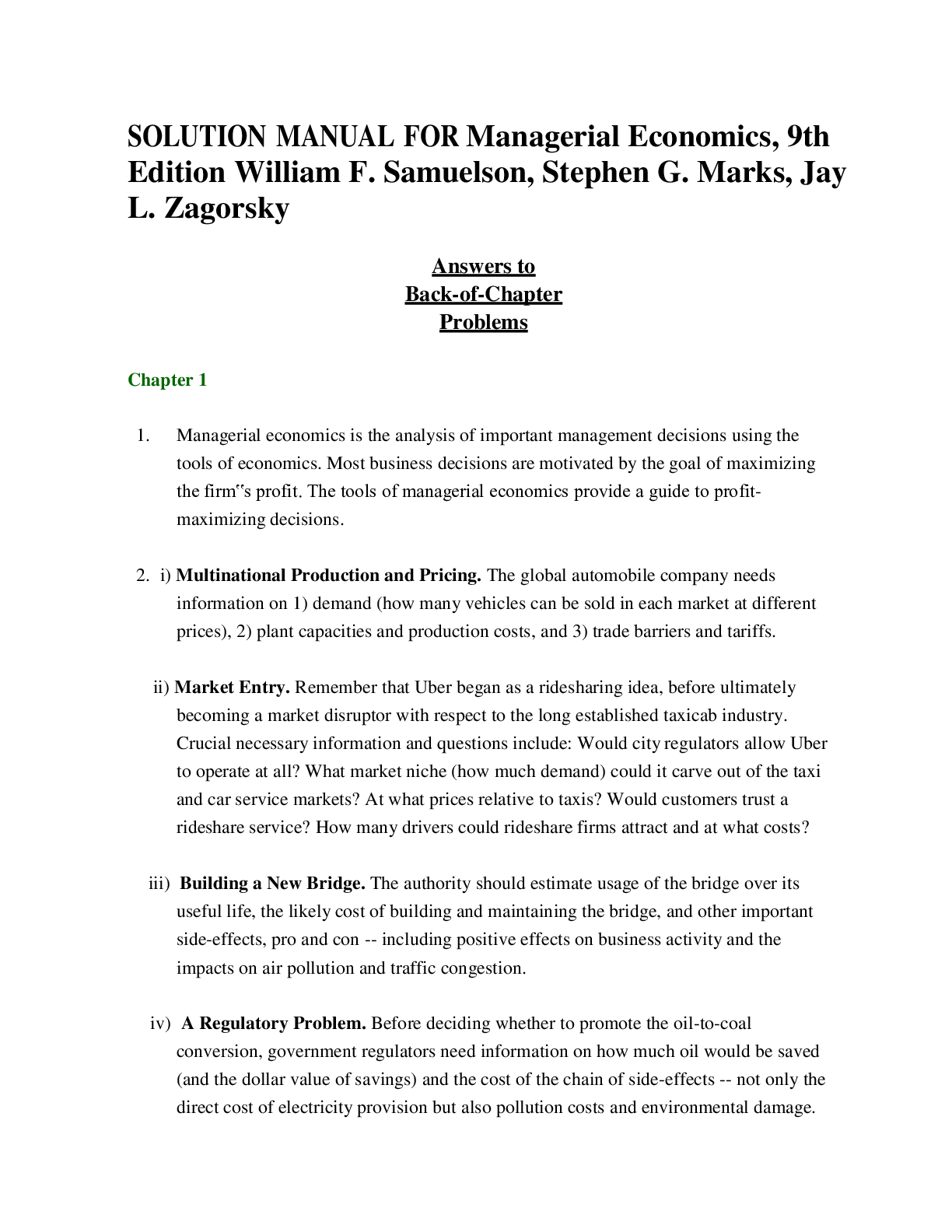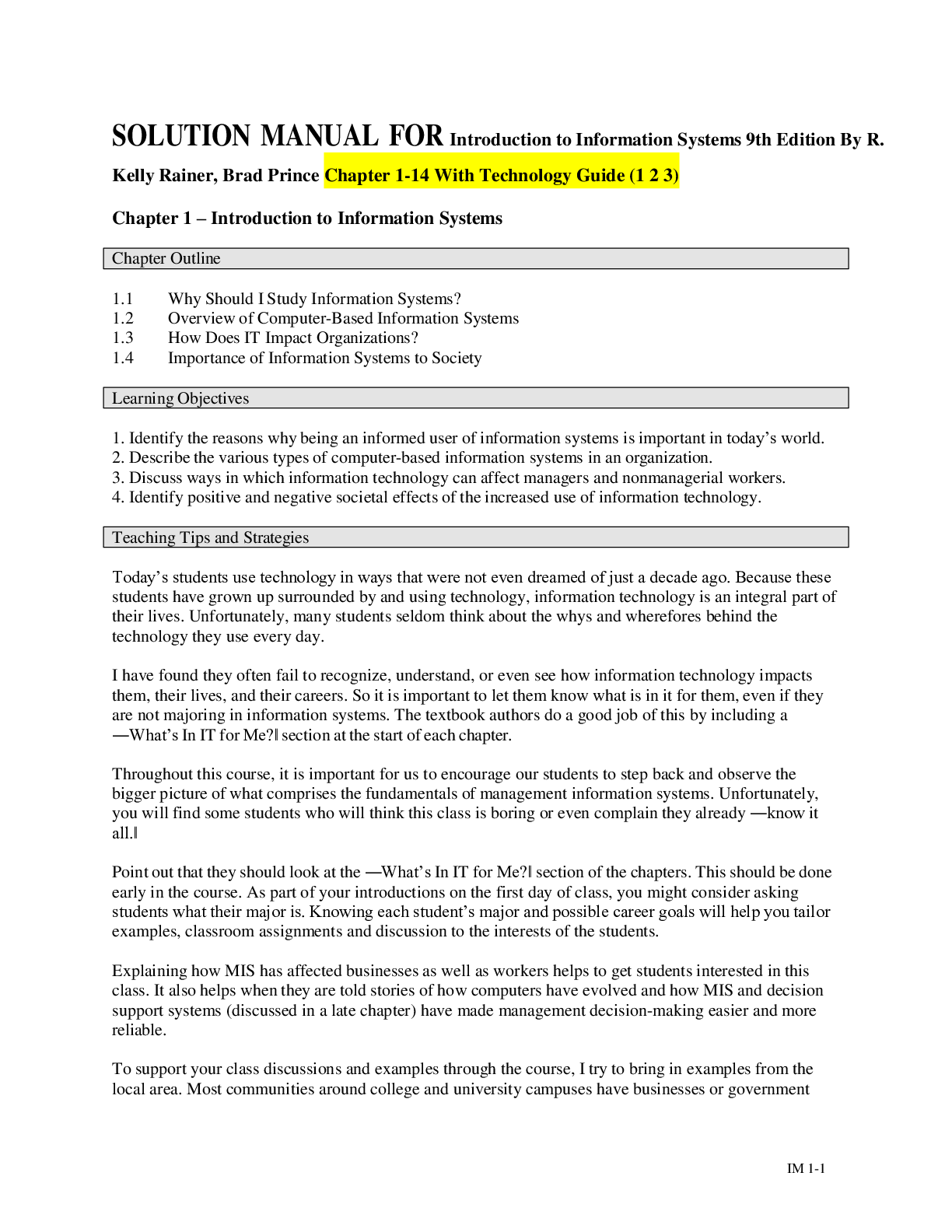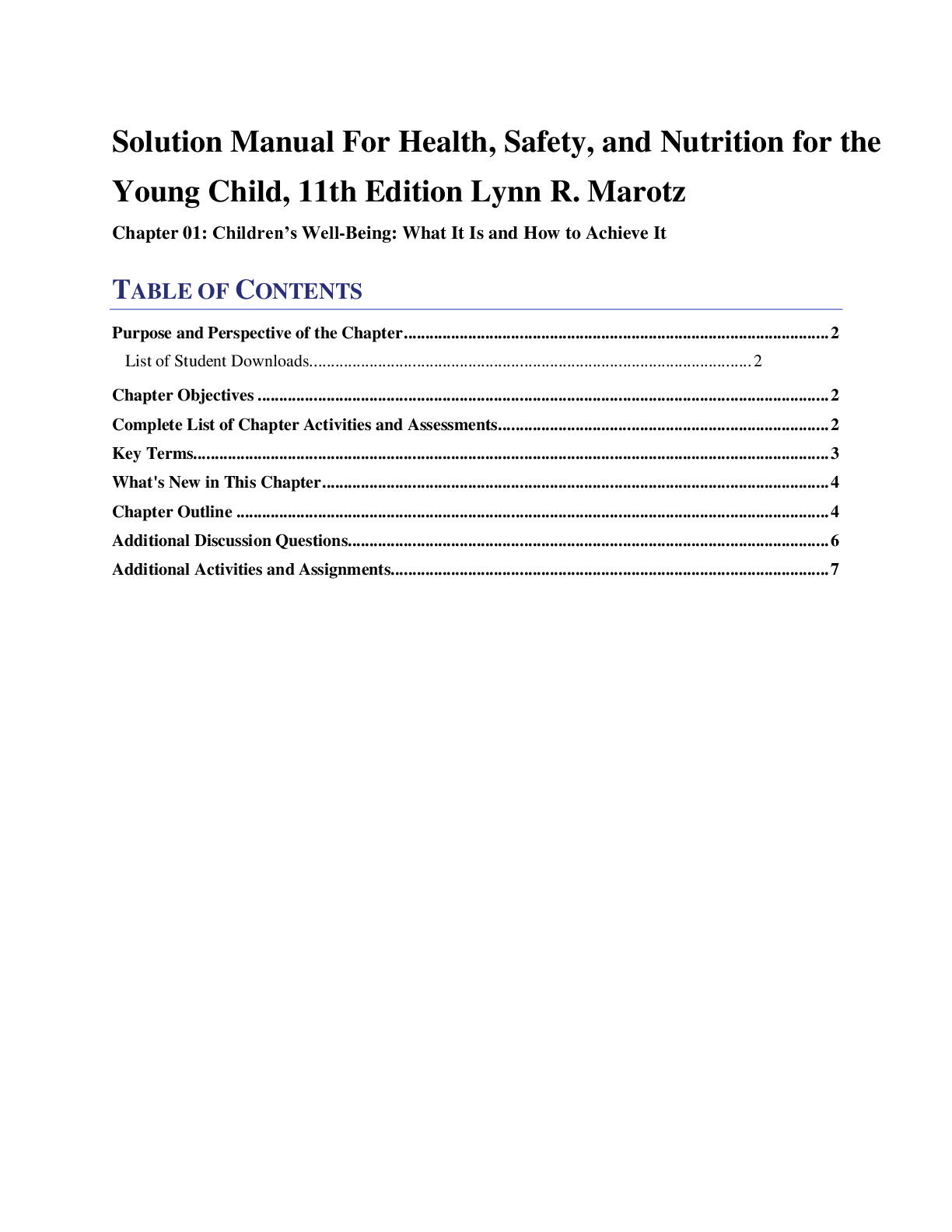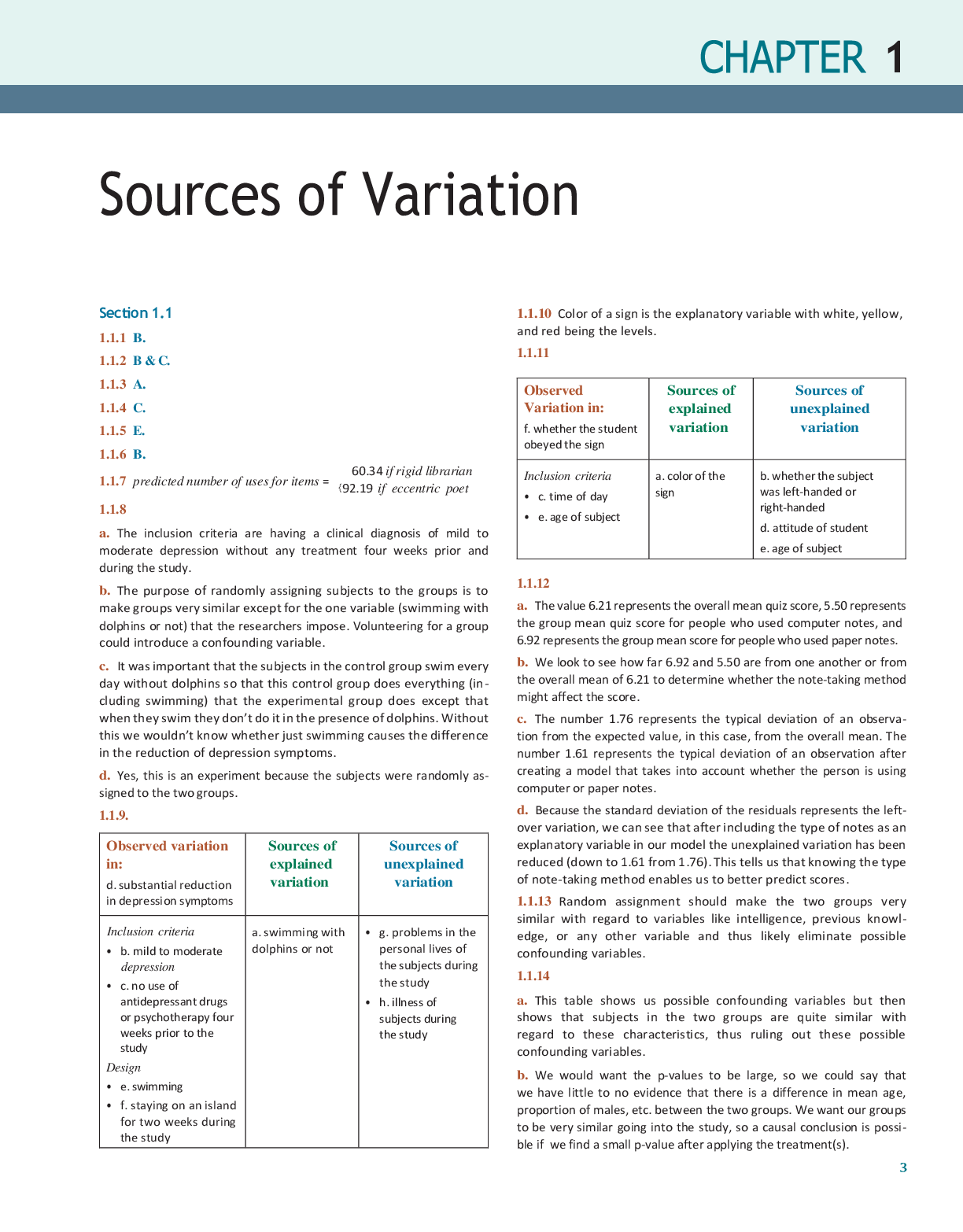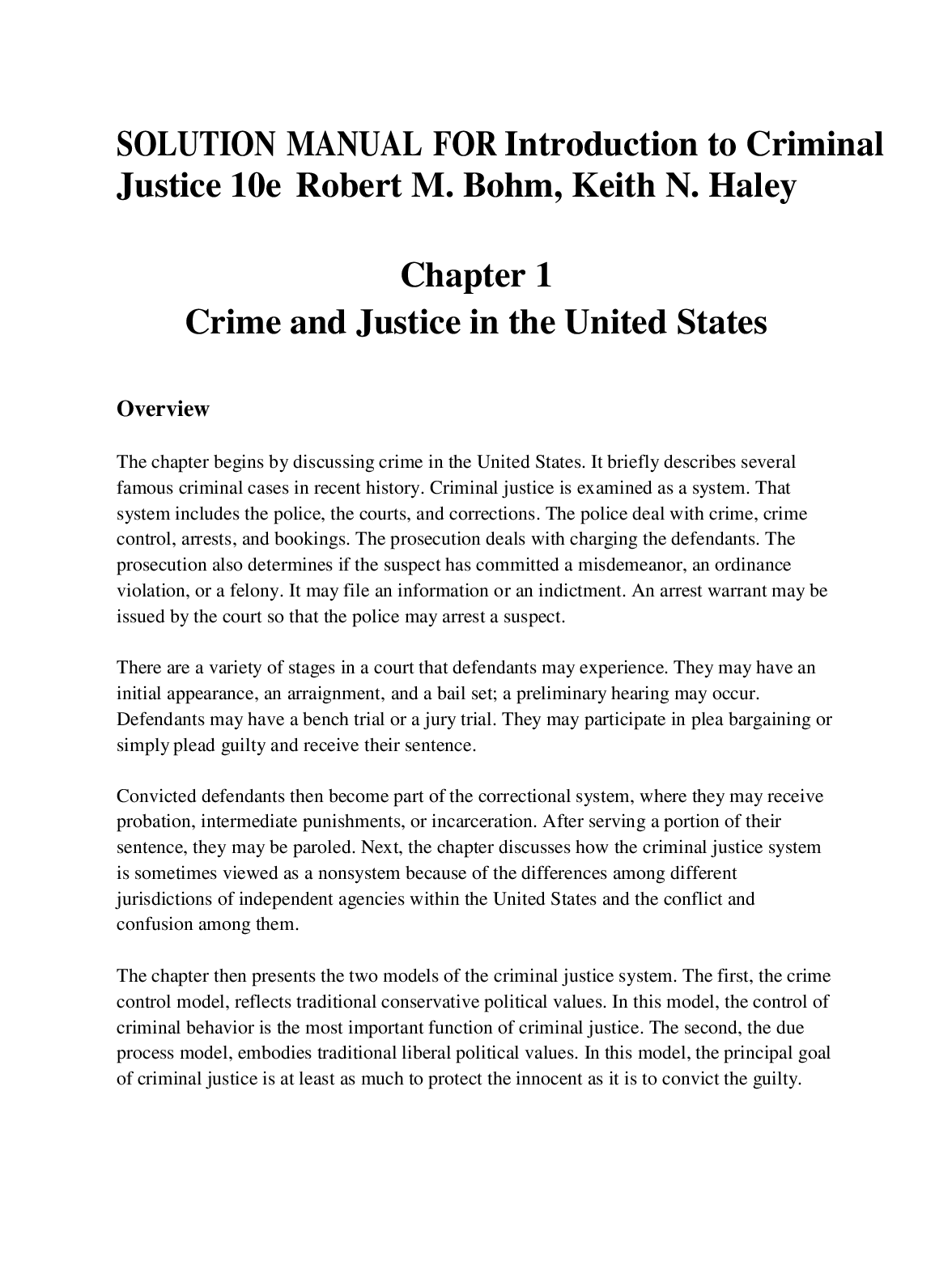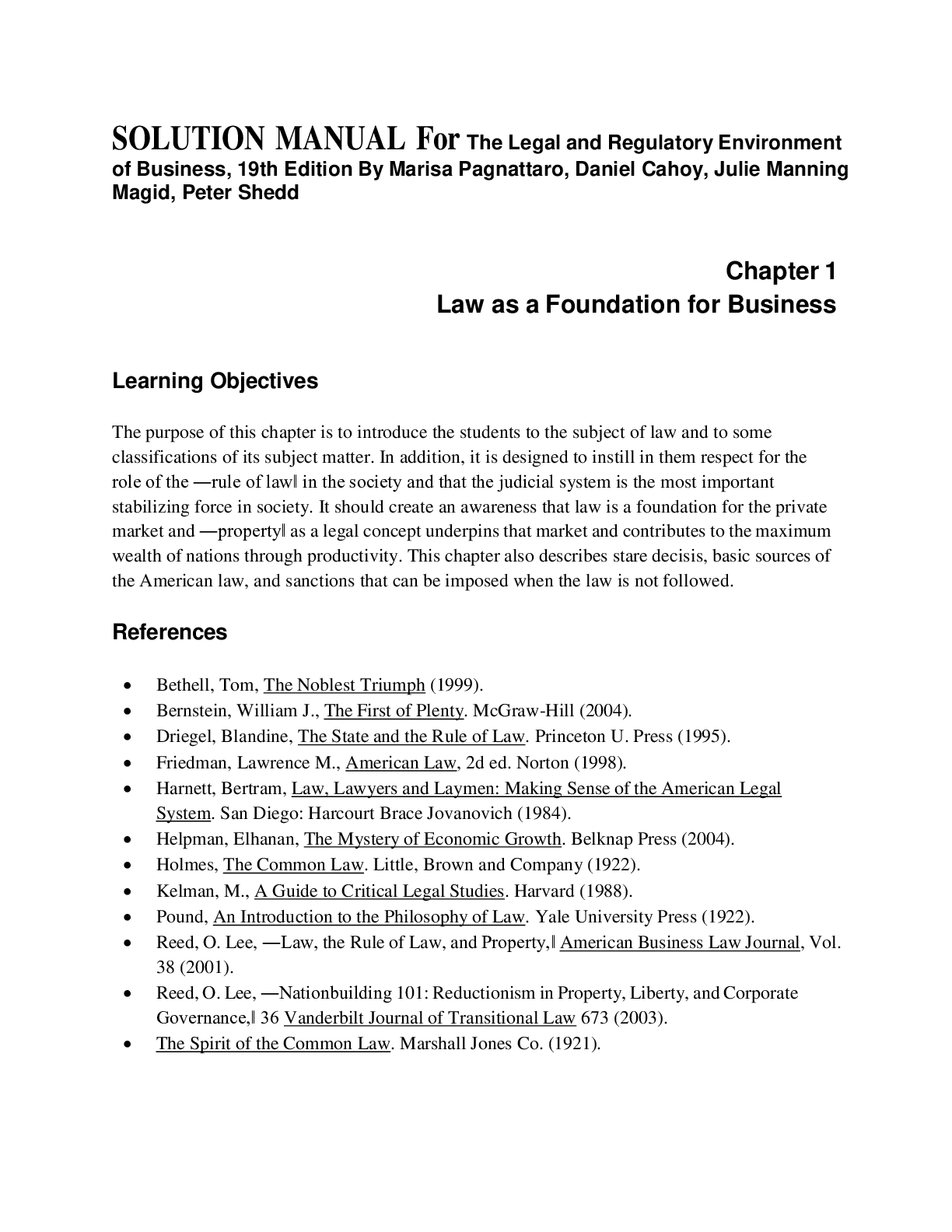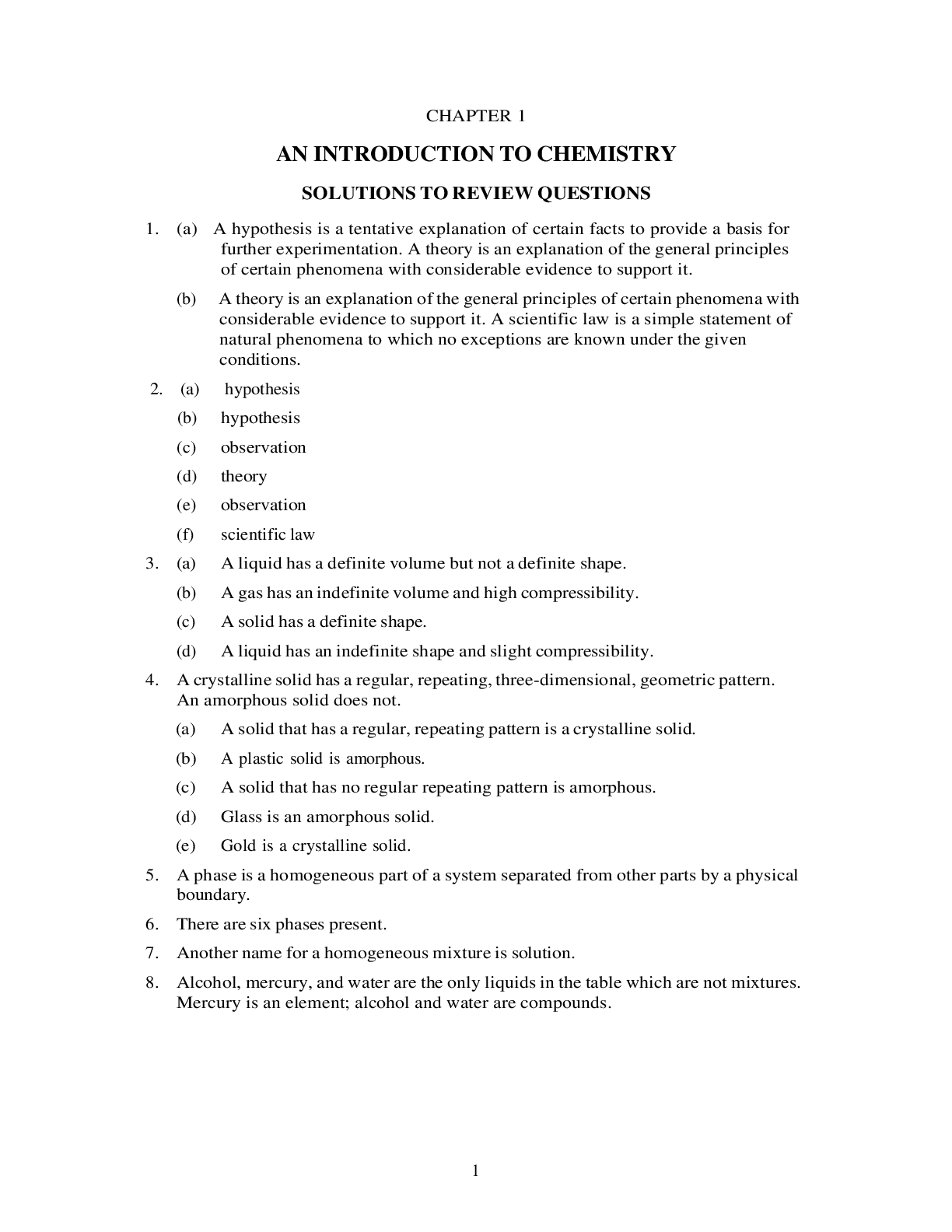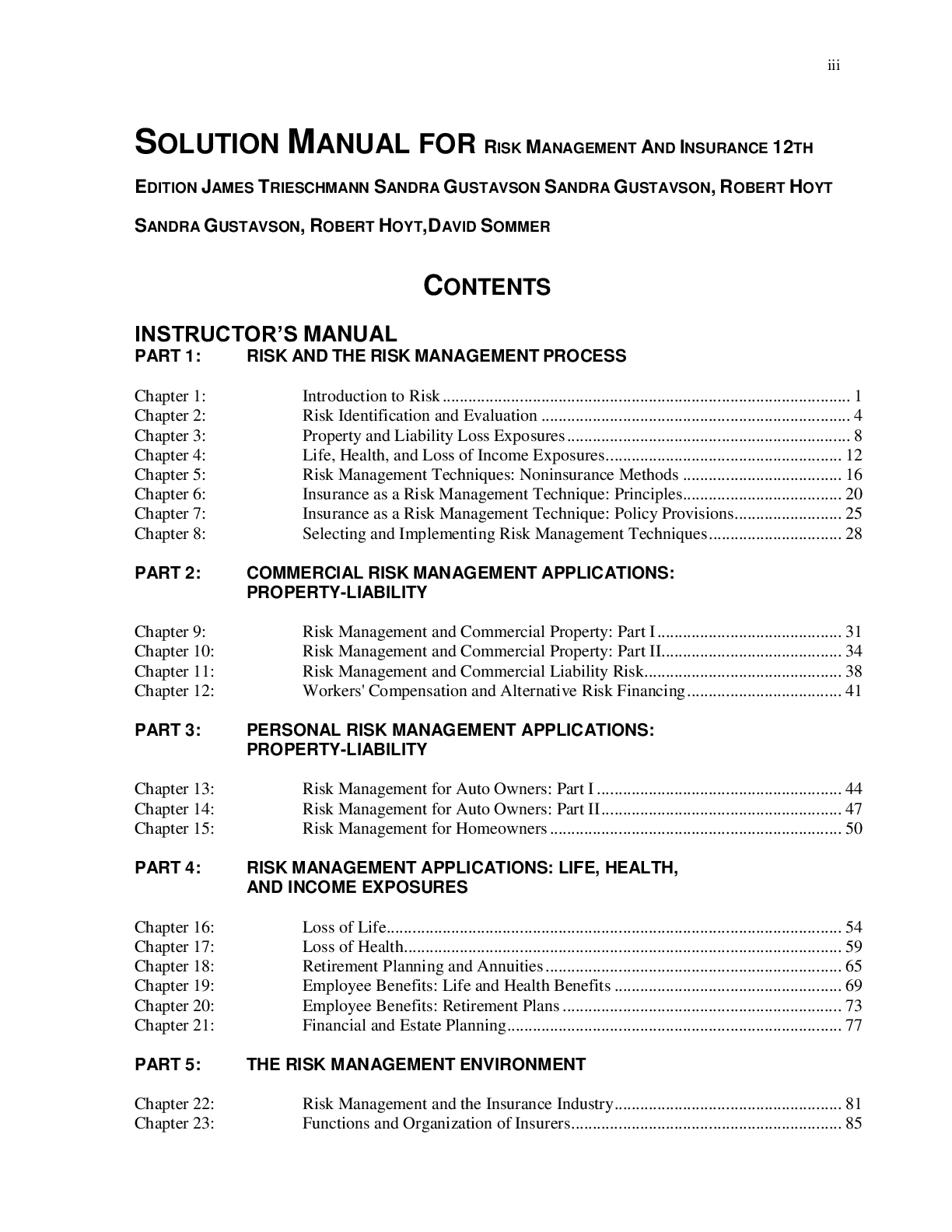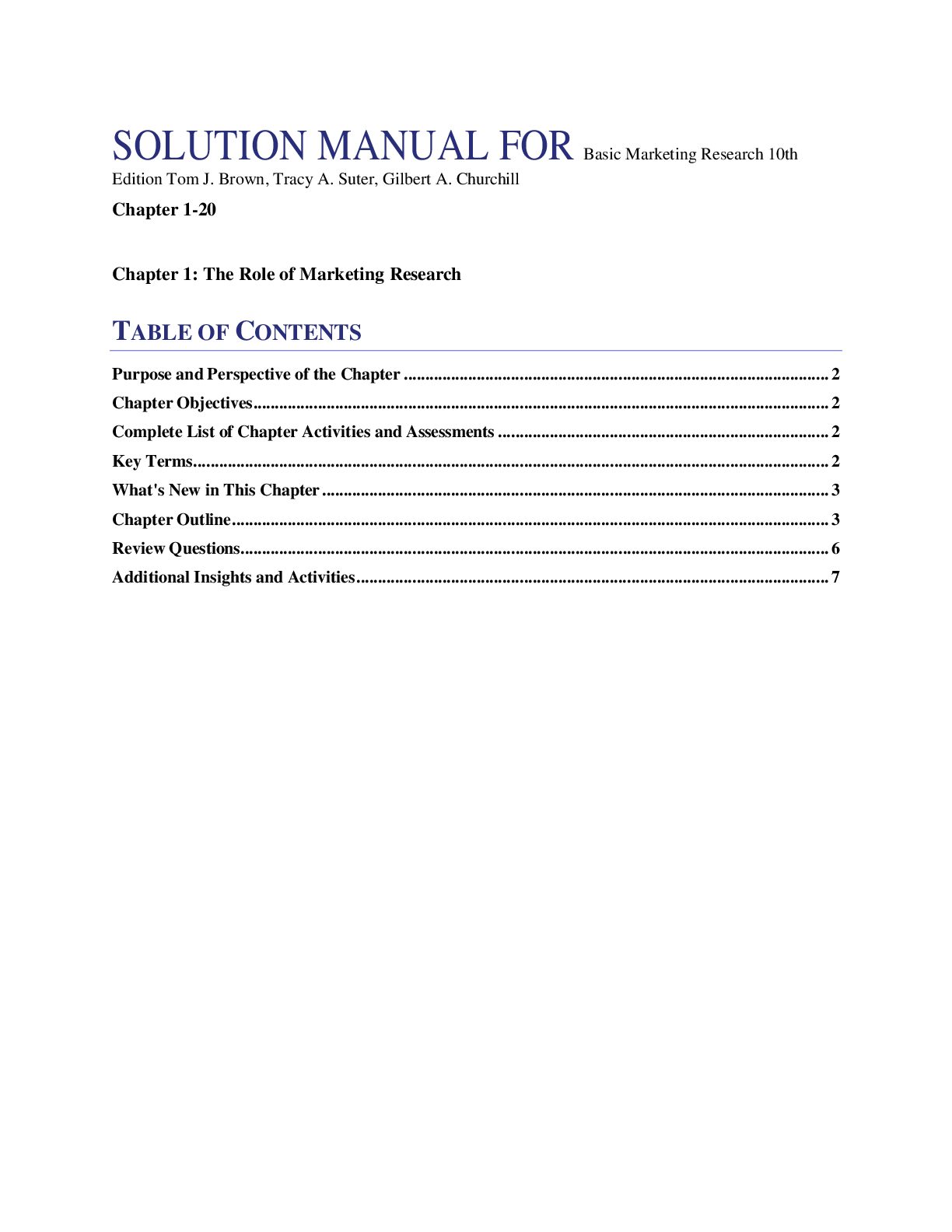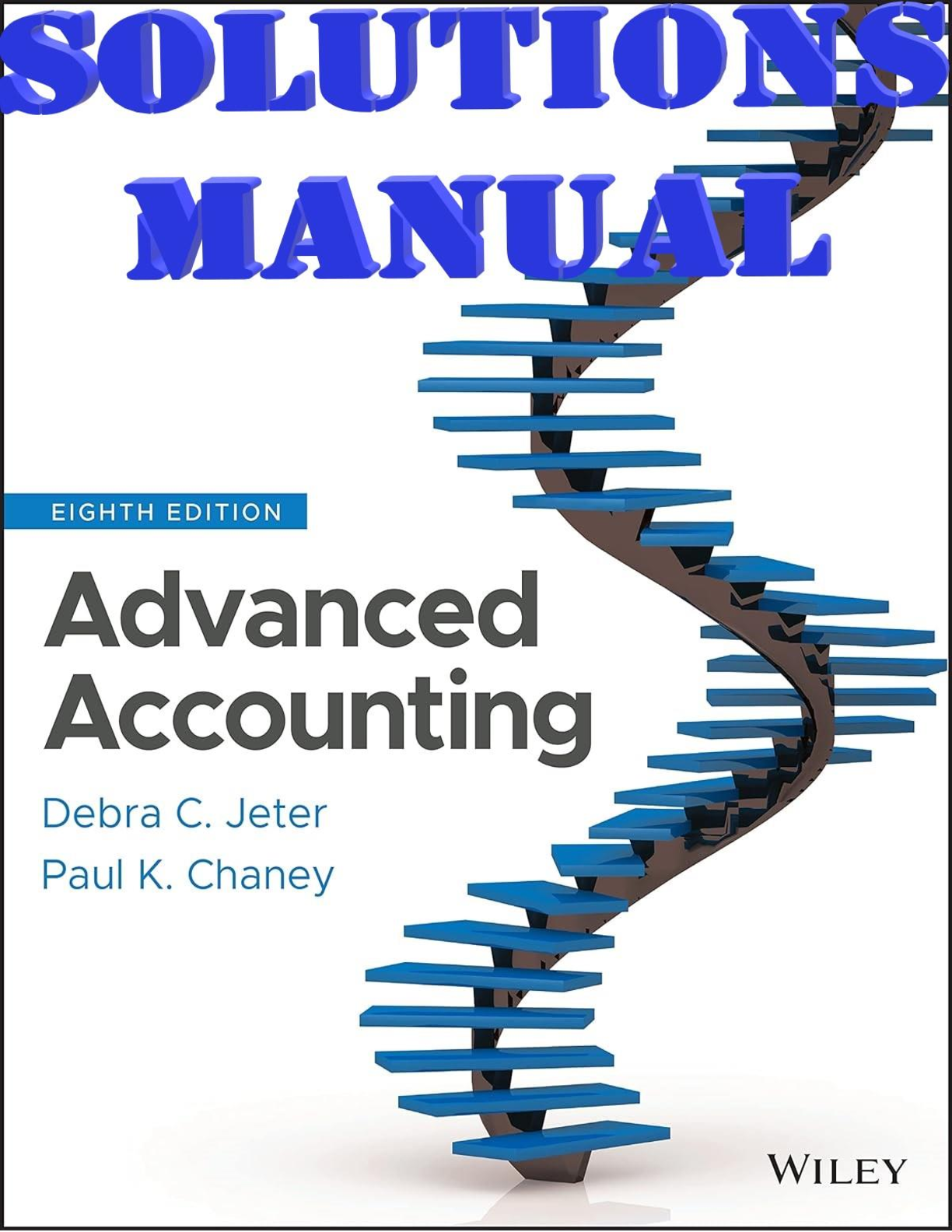Accounting > SOLUTIONS MANUAL > Solution Manual for Advanced Accounting 15th Edition By Joe Ben Hoyle, Thomas Schaefer And Timothy D (All)
Solution Manual for Advanced Accounting 15th Edition By Joe Ben Hoyle, Thomas Schaefer And Timothy Doupnik
Document Content and Description Below
Solution Manual for Advanced Accounting 15th Edition By Joe Ben Hoyle, Thomas Schaefer And Timothy Doupnik-I. Four methods are principally used to account for an investment in equity securities along ... with a fair value option. A. Fair value method: applied by an investor when only a small percentage of a company‘s voting stock is held. 1. The investor recognizes income when the investee declares a dividend. 2. Portfolios are reported at fair value. If fair values are unavailable, investment is reported at cost. B. Cost Method: applied to investments without a readily determinable fair value. When the fair value of an investment in equity securities is not readily determinable, and the investment provides neither significant influence nor control, the investment may be measured at cost. The investment remains at cost unless 1. A demonstrable impairment occurs for the investment, or 2. An observable price change occurs for identical or similar investments of the same issuer. The investor typically recognizes its share of investee dividends declared as dividend income. C. Consolidation: when one firm controls another (e.g., when a parent has a majority interest in the voting stock of a subsidiary or control through variable interests, their financial statements are consolidated and reported for the combined entity. D. Equity method: applied when the investor has the ability to exercise significant influence over operating and financial policies of the investee. 1. Ability to significantly influence investee is indicated by several factors including representation on the board of directors, participation in policy-making, etc. 2. GAAP guidelines presume the equity method is applicable if 20 to 50 percent of the outstanding voting stock of the investee is held by the investor. Current financial reporting standards allow firms to elect to use fair value for any new investment in equity shares including those where the equity method would otherwise apply. However, the option, once taken, is irrevocable. The investor recognizes both investee dividends and changes in fair value over time as income. II. Accounting for an investment: the equity method A. The investor adjusts the investment account to reflect all changes in the equity of the investee company. B. The investor accrues investee income when it is reported in the investee‘s financial statements. C. Dividends declared by the investee create a reduction in the carrying amount of the Investment account. This book assumes all investee dividends are declared and paid in the same reporting period. III. Special accounting procedures used in the application of the equity method A. Reporting a change to the equity method when the ability to significantly influence an investee is achieved through a series of acquisitions. 1. Initial purchase(s) will be accounted for by means of the fair value method (or at cost) until the ability to significantly influence is attained. 2. When the ability to exercise significant influence occurs following a series of stock purchases, the investor applies the equity method prospectively. The total fair value at the date significant influence is attained is compared to the investee‘s book value to determine future excess fair value amortizations. B. Investee income from other than continuing operations 1. The investor recognizes its share of investee reported other comprehensive income (OCI) through the investment account and the investor‘s own OCI. 2. Income items such as discontinued operations that are reported separately by the investee should be shown in the same manner by the investor. The materiality of these other investee income elements (as it affects the investor) continues to be a criterion for separate disclosure. C. Investee losses 1. Losses reported by the investee create corresponding losses for the investor. 2. A permanent decline in the fair value of an investee‘s stock should be recognized immediately by the investor as an impairment loss. 3. Investee losses can possibly reduce the carrying value of the investment account to a zero balance. At that point, the equity method ceases to be applicable and the fair-value method is subsequently used. D. Reporting the sale of an equity investment 1. The investor applies the equity method until the disposal date to establish a proper book value. 2. Following the sale, the equity method continues to be appropriate if enough shares are still held to maintain the investor‘s ability to significantly influence the investee. If that ability has been lost, the fair-value method is subsequently used. [Show More]
Last updated: 8 months ago
Preview 5 out of 824 pages

Loading document previews ...
Buy this document to get the full access instantly
Instant Download Access after purchase
Buy NowInstant download
We Accept:

Reviews( 0 )
$19.50
Can't find what you want? Try our AI powered Search
Document information
Connected school, study & course
About the document
Uploaded On
Oct 25, 2024
Number of pages
824
Written in
Additional information
This document has been written for:
Uploaded
Oct 25, 2024
Downloads
0
Views
35

